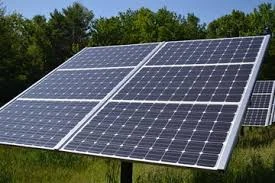Exploring the Benefits and Efficiency of Bifacial Solar Panels in Renewable Energy Solutions
The Rise of Bifacial Solar Panels A Game Changer in Renewable Energy
In recent years, the global push for renewable energy has intensified, with solar energy at the forefront of this movement. Among the latest innovations in solar technology, bifacial solar panels have emerged as a significant advancement, promising higher efficiency and greater energy production compared to traditional solar panels. This article delves into the workings, advantages, and potential impact of bifacial solar panels in the quest for sustainable energy solutions.
What Are Bifacial Solar Panels?
Bifacial solar panels are designed with solar cells on both sides, allowing them to capture sunlight from both the front and rear. This innovative design significantly increases the amount of solar energy harvested, as the rear side can utilize reflected sunlight from the ground or nearby surfaces. Traditional solar panels, in contrast, are only capable of capturing sunlight from one side, limiting their overall energy generation potential.
How Do Bifacial Panels Work?
The effectiveness of bifacial solar panels hinges on a phenomenon known as albedo, which refers to the reflectivity of surfaces. Different surfaces, such as gravel, sand, or even water, have varying albedo rates. The use of bifacial panels allows for the absorption of additional sunlight that is reflected off these surfaces, boosting energy production. This capability is particularly advantageous in installations with high albedo surfaces, where the rear side can produce a significant portion of the total energy output.
Advantages of Bifacial Solar Panels
1. Increased Energy Output One of the most compelling benefits of bifacial solar panels is their enhanced energy production. Studies suggest that bifacial panels can yield up to 30% more energy compared to traditional panels, depending on the installation site and environmental conditions.
2. Durability and Longevity Bifacial panels are often constructed with higher quality materials, making them more durable and resistant to environmental damage. Many manufacturers offer warranties extending to 30 years or more, indicating their confidence in the longevity and reliability of these panels.
bifacial solar panel

3. Reduced Land Use Given their increased efficiency, bifacial solar panels enable more energy generation on smaller plots of land. This is particularly beneficial in regions where land availability is limited, allowing for the expansion of solar energy facilities without the necessity for significant additional land.
4. Adaptability Bifacial panels can be installed in various environments, ranging from large solar farms to rooftops and commercial buildings. Their ability to harness reflected light makes them suitable for a wide range of applications.
5. Positive Environmental Impact As a renewable energy source, solar power contributes significantly to reducing greenhouse gas emissions. By maximizing energy capture, bifacial panels help accelerate the transition to cleaner energy sources, which is crucial for mitigating climate change.
Challenges and Considerations
While bifacial solar panels offer numerous benefits, they are not without their challenges. The initial cost of bifacial panels can be higher compared to traditional panels, though this can be offset by the increased energy output over time. Additionally, careful planning and installation are required to maximize the benefits of the rear-side energy capture, including consideration of the surrounding environment, such as the type of ground surface and its reflectivity.
The Future of Bifacial Solar Technology
As technology continues to evolve, the future of bifacial solar panels looks promising. With ongoing research and development, efficiencies are expected to improve further, making them an even more attractive option for solar energy generation. The growing awareness of climate issues and the push for sustainable practices also bode well for the adoption of bifacial technology in both residential and commercial applications.
In conclusion, bifacial solar panels represent a significant leap forward in solar technology, offering increased efficiency, durability, and environmental benefits. As the world continues to seek sustainable energy solutions, bifacial panels stand out as a viable option that could help meet the growing energy demands while reducing harmful emissions. Embracing this technology could pave the way for a greener, more sustainable future in renewable energy.
-
Understanding the Advantages of Solar String Inverters for Your Energy SystemNewsApr.29,2025
-
Choosing the Right PV Inverter: A Comprehensive GuideNewsApr.29,2025
-
The Future of Solar Power: Exploring Bifacial Solar PanelsNewsApr.29,2025
-
The Complete Guide to Solar Panels: Efficiency, Cost, And InstallationNewsApr.29,2025
-
The Best Options for Efficiency and Cost-EffectivenessNewsApr.29,2025
-
Harnessing the Power of Off-Grid Solar Inverters for Energy IndependenceNewsApr.29,2025







